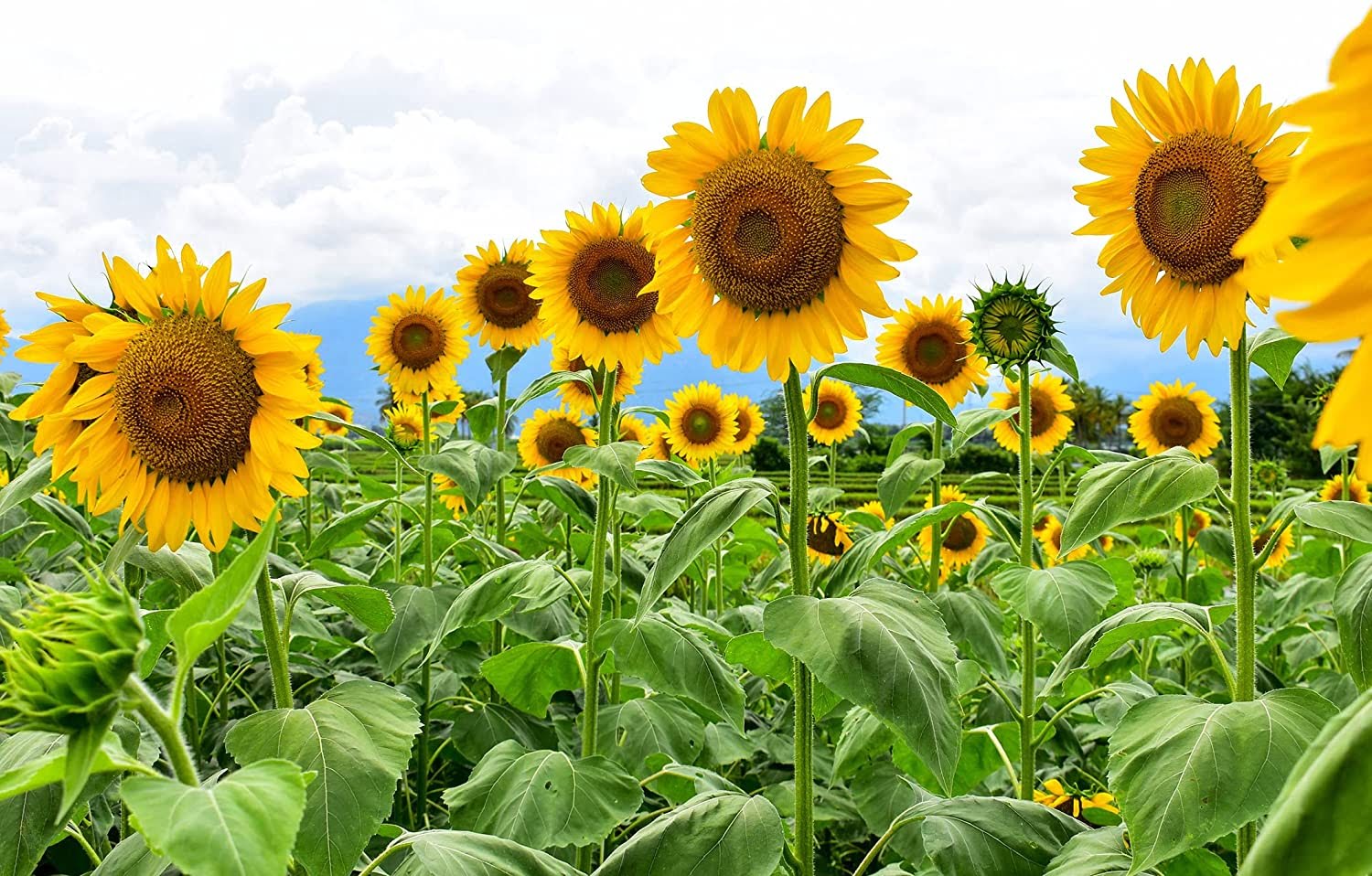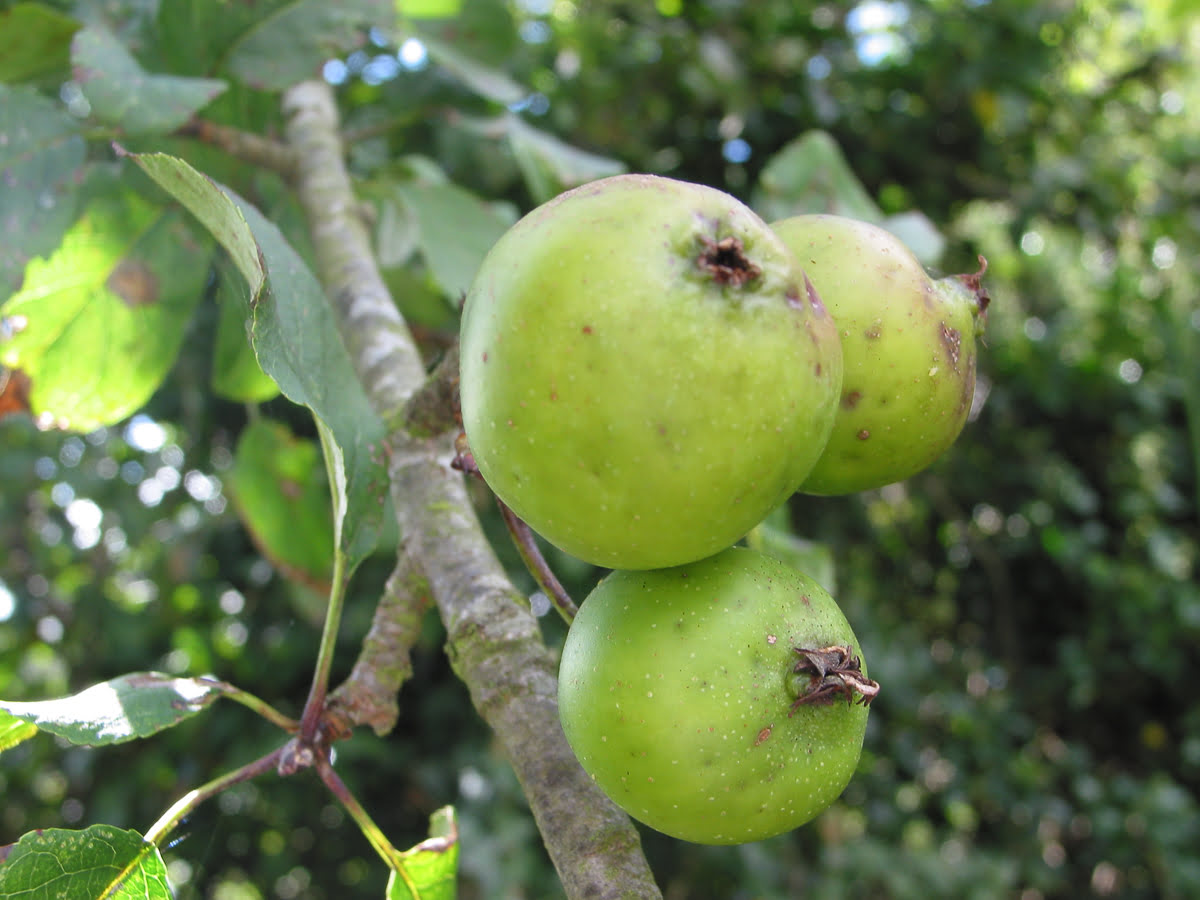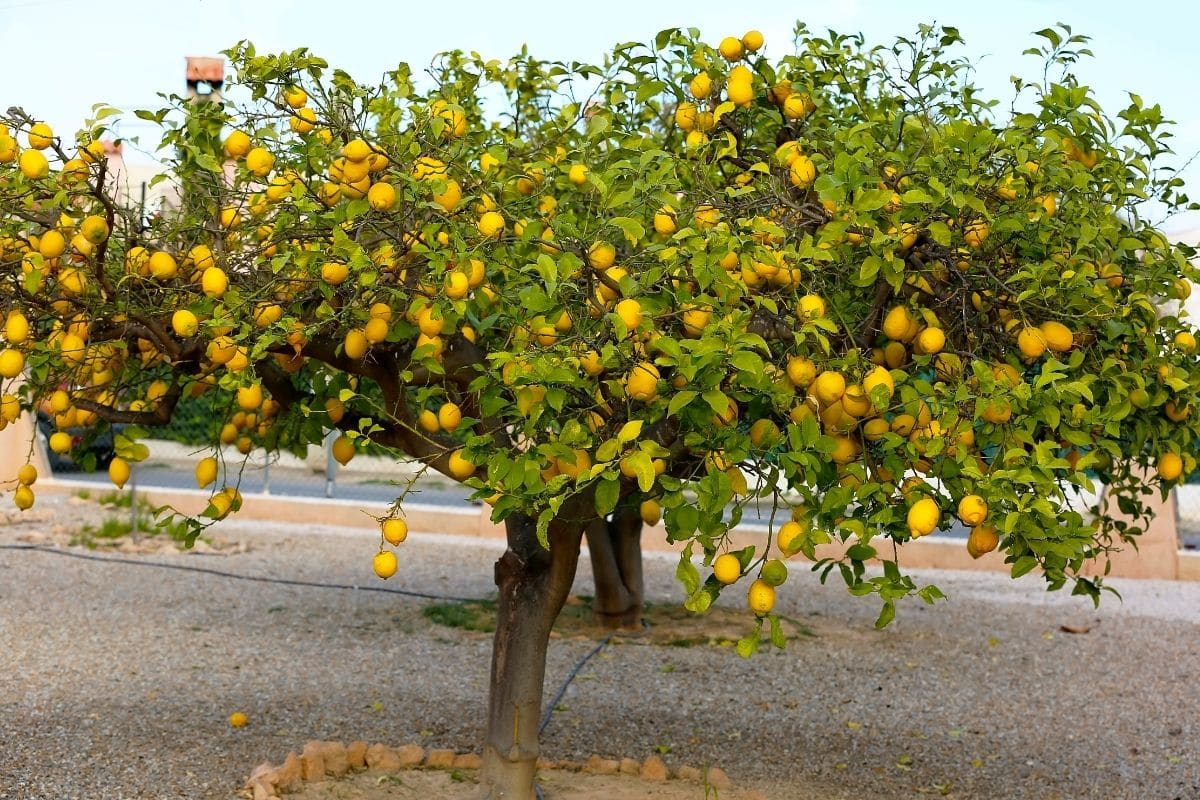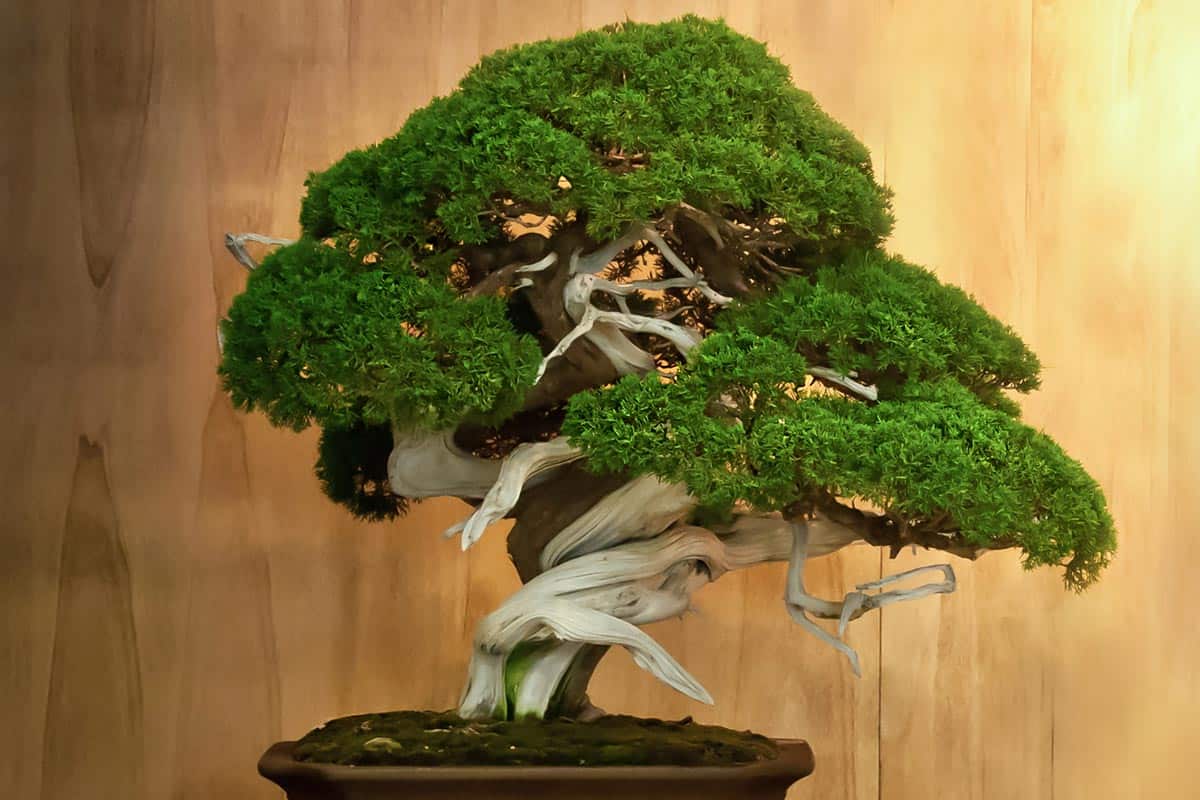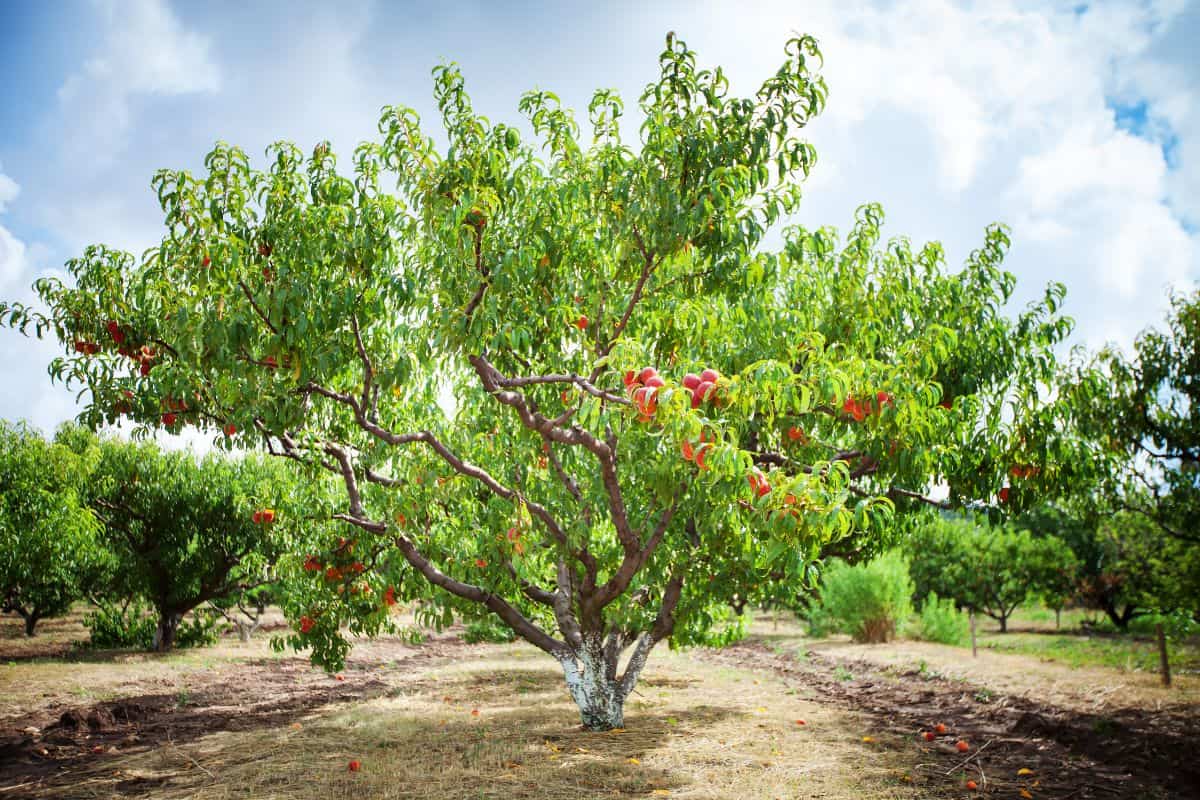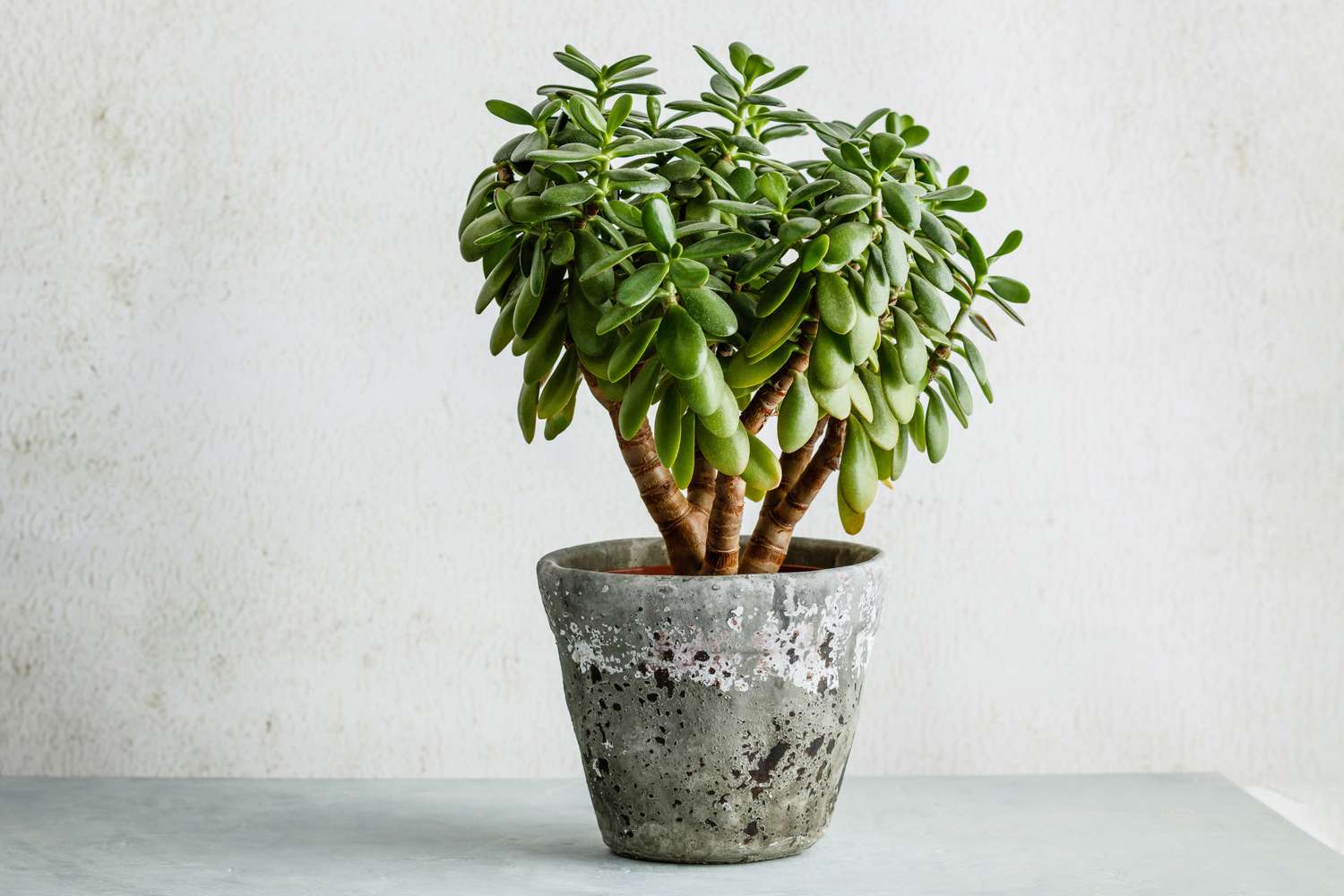Home>Gardening Tips and Tricks>Eco-Friendly Gardening>How Big Of A Reservoir Do Hydroponics Need
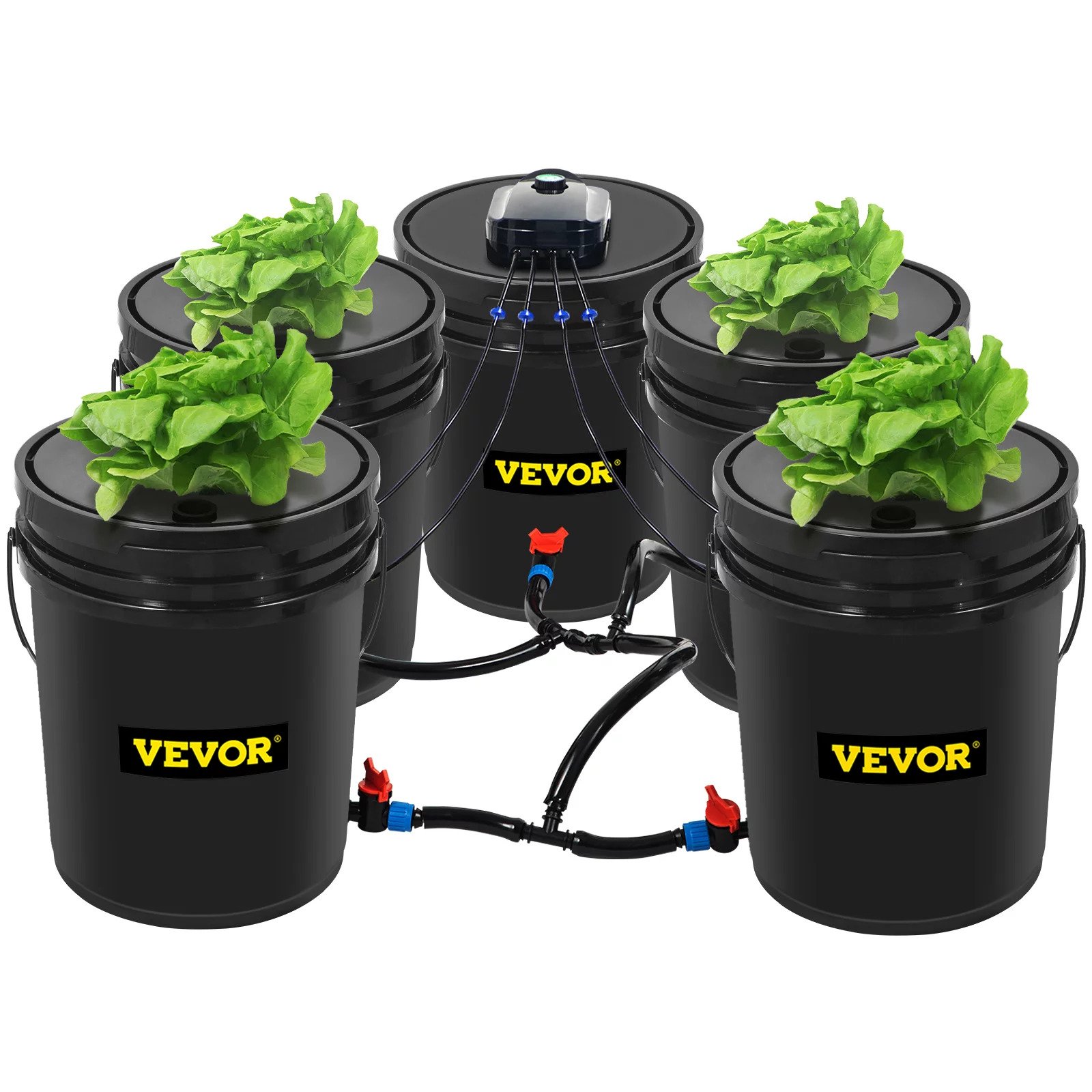

Eco-Friendly Gardening
How Big Of A Reservoir Do Hydroponics Need
Modified: January 22, 2024
Learn how to create an eco-friendly gardening system with hydroponics. Discover the perfect size reservoir for your plants' needs.
(Many of the links in this article redirect to a specific reviewed product. Your purchase of these products through affiliate links helps to generate commission for Chicagolandgardening.com, at no extra cost. Learn more)
Table of Contents
- Introduction
- What is hydroponics?
- Understanding the importance of a reservoir
- Factors to consider when determining the size of a hydroponic reservoir
- Types of hydroponic systems and their impact on reservoir size
- Calculating the ideal reservoir capacity for your hydroponic setup
- The significance of water quality in hydroponics and its influence on reservoir size
- Maintenance requirements for a hydroponic reservoir
- Conclusion
Introduction
Welcome to the world of hydroponics! If you’re passionate about gardening and interested in sustainable practices, you’ve come to the right place. Hydroponics is a revolutionary method of growing plants without soil, using only water and nutrient-rich solutions. This innovative approach not only conserves water but also allows for year-round cultivation, making it an ideal choice for eco-friendly gardening enthusiasts.
One crucial component of any hydroponic system is the reservoir. The reservoir serves as a central hub where water and nutrients are stored, ensuring plants have a constant supply for optimal growth. The size of the reservoir plays a significant role in maintaining a stable environment for your plants, influencing factors such as nutrient availability, pH levels, and water temperature.
As you delve into the world of hydroponics, understanding the importance of a properly sized reservoir is essential for successful gardening. In this article, we will explore the factors to consider when determining the size of a hydroponic reservoir, the different types of hydroponic systems, calculating the ideal reservoir capacity, and the significance of water quality. By the end, you’ll have a comprehensive understanding of how to choose the right reservoir size for your hydroponic setup.
What is hydroponics?
Hydroponics is a soilless gardening technique that enables plants to grow in a nutrient-rich water solution. In traditional gardening, plants rely on soil to provide them with necessary nutrients, water, and stability. However, hydroponics takes a different approach by substituting soil with various growing mediums such as perlite, coco coir, or rockwool.
Instead of obtaining nutrients from soil, hydroponic plants receive their nourishment directly from a water-based solution. This method allows for precise control over nutrient levels, pH balance, and water quality, resulting in optimal growth and improved crop yields.
Hydroponics offers several advantages over traditional soil-based gardening. First and foremost, it allows for efficient water usage. In hydroponics, water is recirculated through the system, reducing water waste significantly compared to conventional gardening methods. This is especially beneficial in regions with limited water resources or in areas prone to drought.
Furthermore, hydroponics eliminates the need for pesticides and herbicides, as the controlled environment helps to prevent pest infestations and weed growth. This makes it an environmentally friendly and sustainable gardening option. Additionally, by growing plants indoors or in controlled environments, hydroponics allows for year-round cultivation, regardless of weather conditions or seasonal limitations.
Hydroponics also offers flexibility in terms of location. It can be practiced indoors using artificial lighting systems, in greenhouses, or even on rooftops, making it accessible to urban gardeners or those with limited outdoor space.
Overall, hydroponics is a modern and eco-friendly approach to gardening that offers numerous benefits. By harnessing the power of water and nutrients, hydroponic gardeners can achieve healthy plant growth, conserve water, reduce chemical usage, and cultivate crops year-round.
Understanding the importance of a reservoir
In a hydroponic system, the reservoir serves as a vital component that stores and distributes water and nutrient solutions to the plants. The reservoir plays a crucial role in maintaining a stable and sustainable growing environment for the plants. Here’s why the reservoir is so important:
1. Water and nutrient storage: The reservoir acts as a storage tank for water and nutrient solutions. It ensures a constant and readily available supply of water and nutrients to the plants, promoting healthy growth and development. This is especially beneficial in areas with limited access to water or for gardeners who prefer to automate their watering system.
2. Nutrient mixing and distribution: The reservoir provides a space for mixing and circulating the nutrient solution. This allows for proper blending of essential nutrients, ensuring that plants receive a balanced and optimal nutrient supply. Through the use of pumps and irrigation systems, the nutrient solution is distributed evenly to the plant roots, providing them with the necessary elements for growth.
3. pH and EC regulation: The reservoir plays a critical role in maintaining the pH and Electrical Conductivity (EC) levels of the nutrient solution. pH levels can affect nutrient availability to the plants, while EC levels indicate the concentration of dissolved nutrients. Monitoring and adjusting these levels in the reservoir ensures that plants receive the appropriate nutrient balance, preventing nutrient deficiencies or toxicities.
4. Temperature control: The reservoir helps in controlling the temperature of the nutrient solution. It can act as a thermal mass, absorbing excess heat generated by artificial lighting systems or ambient temperature fluctuations. Maintaining the proper temperature range in the reservoir is essential for the overall health of the plants, as extreme temperatures can stress or damage the root system.
5. Preventing waterborne diseases: By providing a controlled environment, the reservoir helps to minimize the risk of waterborne diseases and pathogens. Proper maintenance and disinfection of the reservoir reduce the chances of algae growth, bacterial contamination, and the spread of diseases that can harm the plant roots.
In summary, the reservoir is an integral component of a hydroponic system, ensuring a continuous supply of water and nutrients, regulating pH and EC levels, controlling temperature, and preventing the spread of waterborne diseases. Understanding the importance of a properly sized and well-maintained reservoir is essential for successful hydroponic gardening.
Factors to consider when determining the size of a hydroponic reservoir
Choosing the right size for your hydroponic reservoir is crucial for maintaining a healthy and productive garden. Several factors should be taken into account when determining the appropriate size of your reservoir:
1. Plant water requirements: The water needs of your plants will largely depend on the type of plants you are growing and their growth stage. Leafy greens, for example, have relatively low water requirements compared to fruiting plants like tomatoes. Research the specific water needs of your chosen plants to estimate the daily water consumption and factor that into the size of the reservoir.
2. System type and configuration: Different hydroponic systems have varying water management requirements. For example, a deep water culture system will generally require a larger reservoir compared to a nutrient film technique system. Consider the specific needs and limitations of your chosen hydroponic system when determining the size of the reservoir.
3. Environmental conditions: Factors like temperature and humidity can affect the evaporation rate of water from your reservoir. Higher temperatures and lower humidity levels can lead to increased evaporation, necessitating a larger reservoir to compensate for the water loss. Take into account your specific environmental conditions to anticipate and accommodate these factors.
4. Nutrient solution concentration: The concentration of nutrients in your reservoir can impact the water requirements of your plants. A higher nutrient concentration may result in higher water uptake by the plants. Consider the strength of your nutrient solution and adjust the reservoir size accordingly to ensure sufficient water availability.
5. Maintenance frequency: The frequency at which you plan to perform reservoir maintenance tasks, such as water changes or nutrient solution adjustments, can influence the size of the reservoir. A larger reservoir will generally require less frequent maintenance, while a smaller reservoir may require more frequent attention. Choose a reservoir size that aligns with your desired maintenance routine.
6. Available space: Consider the physical space available for your hydroponic setup when determining the size of your reservoir. Ensure that the selected reservoir size fits comfortably within your growing area and allows for easy access and maintenance.
7. Water quality: Poor water quality, such as high levels of dissolved solids or contaminants, may require more frequent water changes or filtration. If you’re using water with low quality or high mineral content, a larger reservoir can provide a buffer to dilute the effects and reduce the impact on plant health.
By considering these factors and conducting research specific to your hydroponic setup, you can determine the optimal size for your reservoir. It’s crucial to strike a balance between providing enough water for your plants’ needs while avoiding excessive water usage. Getting the reservoir size right will contribute to the success of your hydroponic garden.
Types of hydroponic systems and their impact on reservoir size
There are various types of hydroponic systems, each with its own unique characteristics and water management requirements. The type of system you choose will have an impact on the size of the reservoir needed. Here are a few common types of hydroponic systems and their influence on reservoir size:
- Deep Water Culture (DWC): In a DWC system, plant roots are submerged directly into a nutrient-rich solution. This system typically requires a larger reservoir to accommodate the plant roots and provide enough water for proper oxygenation. The reservoir should be deep enough to immerse the roots, but not too deep to restrict oxygen flow.
- Nutrient Film Technique (NFT): The NFT system involves a thin film of nutrient solution flowing over the roots, allowing for oxygenation. Although this system requires less water compared to DWC, it still requires a reservoir to replenish and recirculate the nutrient solution. The reservoir size will depend on the number of plants and the desired flow rate of the nutrient film.
- Ebb and Flow (Flood and Drain): In an ebb and flow system, the growing tray is periodically flooded with nutrient solution and then drained. The reservoir size will depend on the size of the growing tray and the desired frequency of flooding. A larger tray will require a larger reservoir to ensure sufficient nutrient solution for each flooding cycle.
- Aeroponics: Aeroponic systems mist the roots with a nutrient solution, providing high levels of oxygen. Due to the minimal water usage and direct misting of the roots, aeroponic systems typically require a smaller reservoir compared to other hydroponic systems.
The size of the reservoir in these systems can also be influenced by factors such as the number of plants, growth stage, and desired watering frequency. It is important to consider the specific requirements of each hydroponic system and adjust the reservoir size accordingly to ensure an adequate supply of water and nutrients for optimal plant growth.
Additionally, some hydroponic systems, such as recirculating systems, may require a larger reservoir to compensate for water loss due to evaporation, transpiration, or system leaks. It is essential to monitor and maintain the proper water level in the reservoir to sustain a healthy hydroponic system.
Ultimately, the choice of hydroponic system should align with your space availability, grow goals, and personal preferences. Understanding the water management needs and reservoir size requirements of each system will help you make an informed decision and set up a successful hydroponic garden.
Calculating the ideal reservoir capacity for your hydroponic setup
Calculating the appropriate reservoir capacity for your hydroponic setup involves considering several factors, such as the number of plants, their water requirements, growth stage, and system type. By following these steps, you can determine the ideal reservoir capacity:
- Determine water consumption: Start by estimating the daily water consumption of your plants. This can vary depending on the plant species, size, and growth stage. Conduct research or consult gardening resources to gather information on water requirements specific to your chosen plants.
- Calculate water usage per plant: Divide the estimated daily water consumption by the number of plants in your hydroponic system. This will give you an estimate of the water usage per plant.
- Consider growth stage: Keep in mind that water requirements can differ based on the growth stage of the plants. Seedlings may require less water compared to mature plants. Factor in the growth stage of your plants to adjust the water usage estimates accordingly.
- Assess system type: Take into account the water management requirements of your chosen hydroponic system. Different systems have varying efficiency levels at delivering water to plants. Systems like DWC usually require a larger reservoir compared to systems like aeroponics due to the direct immersion of roots or misting methods.
- Consider other factors: Reflect on additional factors that may impact water consumption. For example, environmental conditions like temperature and humidity can affect the evaporation rate, requiring a larger reservoir to compensate for water loss. Nutrient concentration in the reservoir can also influence water consumption.
- Calculate total reservoir capacity: Multiply the water usage per plant by the number of plants in your system. This will give you an estimate of the total water consumption. Add an additional volume to account for any water loss due to evaporation, leaks, or system inefficiencies.
- Allocate space: Consider the physical space you have available for your reservoir. Ensure that the determined reservoir capacity fits comfortably within your hydroponic setup, allowing for easy access, maintenance, and room for plant roots if applicable.
Remember that these calculations provide a starting point, and adjustments may be necessary based on your unique setup, environmental conditions, and personal growing preferences. Monitoring water levels, nutrient solution concentration, and plant health can help you fine-tune your reservoir capacity over time.
By accurately calculating the ideal reservoir capacity, you can ensure that your hydroponic system provides a reliable supply of water and nutrients to support healthy plant growth and optimize your gardening efforts.
The significance of water quality in hydroponics and its influence on reservoir size
In hydroponics, water quality plays a significant role in the overall success of your garden. The quality of the water you use in your reservoir can impact plant health, nutrient availability, and the lifespan of your hydroponic system. Here’s why water quality is crucial and how it can influence the size of your reservoir:
1. Nutrient absorption: Water quality directly affects the ability of plants to absorb nutrients. Poor water quality, such as water with high levels of salts or contaminants, can hinder nutrient absorption by the plant roots. This can lead to nutrient imbalances or deficiencies, negatively impacting growth and productivity. A larger reservoir can help dilute the effects of poor water quality, reducing the impact on plant health.
2. Algae growth: Water with high organic matter or nutrient levels can promote the growth of algae in your hydroponic system. Algae can compete with plants for nutrients, block light from reaching the plants, and clog irrigation systems. Proper water quality management, including maintaining a well-sized reservoir, can help limit algae growth by minimizing nutrient buildup and providing adequate circulation and aeration.
3. pH stability: Water quality also affects the stability of pH levels in your hydroponic system. Fluctuating or unbalanced pH levels can disrupt nutrient uptake and lead to plant stress or nutrient lockouts. Depending on the pH properties of the water source, you may need to adjust the pH of your nutrient solution. A larger reservoir can provide more buffering capacity, helping to stabilize the pH level and reducing the frequency of pH adjustments.
4. Waterborne diseases: Poor water quality can harbor harmful bacteria, fungi, or pathogens that can negatively impact your plants. These waterborne diseases can cause root rot, wilt, or stunted growth. Maintaining a high water quality standard through proper filtration, disinfection, and regular reservoir maintenance can help prevent the spread of waterborne diseases. A larger reservoir can provide a buffer against these diseases, reducing the risk of contamination.
5. Evaporation and nutrient concentration: In hydroponics, water is recirculated within the system, which can result in water loss through evaporation. As water evaporates, the concentration of nutrients in the reservoir can increase. Poor water quality with high mineral content can exacerbate this issue, leading to an accumulation of salts or other substances. A larger reservoir can help dilute the nutrient concentration, reducing the risk of nutrient imbalances in the system.
By maintaining good water quality, you can ensure a healthy and thriving hydroponic garden. Regular water quality testing and monitoring, along with appropriate filtration and treatment methods, can help improve the overall health of your plants and extend the lifespan of your hydroponic system. Remember that water quality issues can vary depending on your specific water source, so it’s crucial to adopt appropriate measures and adjust the size of your reservoir accordingly.
Maintenance requirements for a hydroponic reservoir
Maintaining a hydroponic reservoir is essential for the health and success of your plants. Regular maintenance tasks help to ensure that the water and nutrient solution in the reservoir remain clean, balanced, and conducive to optimal plant growth. Here are some key maintenance requirements to keep in mind for your hydroponic reservoir:
1. Regular monitoring: Regularly monitor the water level, pH levels, and nutrient concentration in your reservoir. Keep an eye out for any signs of imbalance or nutrient deficiencies. Utilize testing kits or meters to make accurate measurements and adjustments as needed.
2. Water replenishment: Check and maintain the appropriate water level in the reservoir. Due to factors like evaporation and plant uptake, the water level may gradually decline over time. Regularly top up with fresh water to ensure a sufficient supply for your plants.
3. Nutrient solution management: Check the nutrient solution concentration in the reservoir and adjust it as necessary. Plants have different nutrient requirements at different stages of growth, so monitor and adjust nutrient dosages accordingly, following the manufacturer’s instructions.
4. pH level adjustment: Monitor the pH level of the nutrient solution regularly. Depending on the plant species and your water source, pH levels may fluctuate. Adjust the pH level using pH-up or pH-down solutions to maintain it within the optimal range for your specific plants.
5. Cleaning and disinfection: Regularly clean and disinfect the reservoir to prevent the buildup of algae, bacteria, and other contaminants. Empty the reservoir, scrub the interior with a non-toxic cleaning solution, and rinse thoroughly before refilling with fresh water and nutrients.
6. System checks: Inspect the entire hydroponic system, including the reservoir, pumps, tubing, and irrigation system, for any signs of leaks, clogs, or malfunctions. Fix any issues promptly to ensure the system operates smoothly and delivers nutrients and water to the plants effectively.
7. Water quality management: Maintain good water quality by using clean, filtered water. If your water source contains high levels of minerals or contaminants, consider using a water filtration system or a reverse osmosis unit to improve the quality. Regularly test the water quality and adjust filtration as needed.
8. Preventive measures: Take preventive measures to maintain reservoir hygiene. Consider using air stones or air pumps to improve oxygenation and reduce the risk of root diseases. Avoid overfeeding your plants, as excessive nutrient accumulation can lead to imbalances or toxicity.
By following these maintenance requirements, you can ensure a healthy and productive hydroponic system. Regular monitoring, timely adjustments, and cleanliness are key to creating an optimal growing environment for your plants and maximizing the benefits of hydroponic gardening.
Conclusion
In summary, understanding and managing the size and maintenance of your hydroponic reservoir are critical factors for successful and sustainable gardening. The reservoir serves as the central hub for water and nutrient storage, distribution, and regulation in your hydroponic system.
When determining the size of your reservoir, consider factors such as plant water requirements, system type, environmental conditions, and water quality. Calculating the ideal reservoir capacity involves estimating water consumption per plant, accounting for growth stages, and allocating space within your setup.
Water quality is of utmost importance in hydroponics, as it impacts nutrient absorption, pH stability, and the prevention of waterborne diseases. Depending on your water source, water quality management may require additional measures such as filtration and disinfection. Ensuring proper water quality can reduce the need for frequent water changes and nutrient adjustments.
Maintaining your reservoir and adhering to regular maintenance tasks are crucial for a healthy hydroponic system. These tasks include monitoring water levels, nutrient concentration, and pH levels, as well as replenishing water, adjusting nutrient dosages, cleaning and disinfecting the reservoir, and performing system checks.
By understanding the importance of a properly sized reservoir, managing water quality, and fulfilling maintenance requirements, you can create an efficient and thriving hydroponic system. With a well-maintained reservoir, you’ll provide your plants with the essential elements they need for optimal growth and achieve the sustainable gardening practices you strive for.
